Lynx-like cats: features and popular breeds
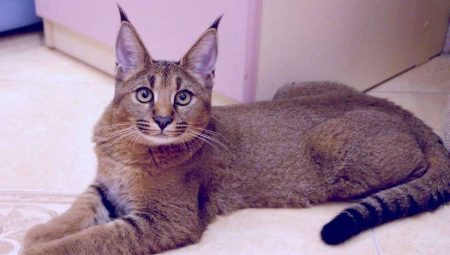
Today the world knows many breeds of cats. Among them there are also exotic ones, similar to a wild lynx. The similarities are noticeable both in appearance and in character and temperament. Some of these animals were bred by breeders, while others appeared by accident. These pets are not suitable for everyone. Only if the cat is in good hands will she reveal all her loyalty and other characteristics.
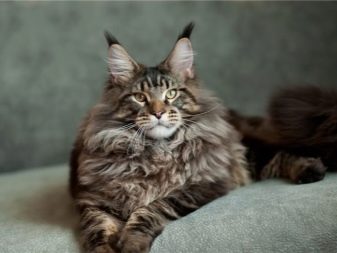
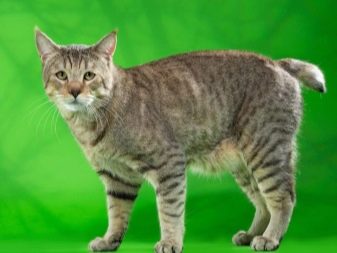
Distinctive features
The lynx is a wild and predatory cat. The growth of the animal reaches 70 cm, and the weight is 30 kg. The lynx-like domestic cat has strong legs with thick hair, a short tail, and a rounded head. All breeds have a characteristic spotted color. A domestic cat with tassels on its ears has a heightened predator hearing, as zoologists assure.
Pets are completely domesticated, treat people well. However, predatory nature and aggression can manifest itself if the animal or its owners are in danger. Cats are active and love to play.
Breeds that are similar to the wild lynx are highly trainable.
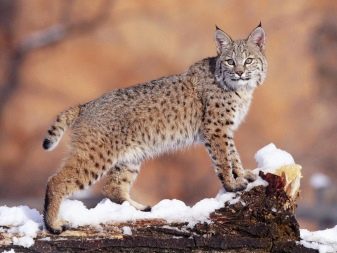
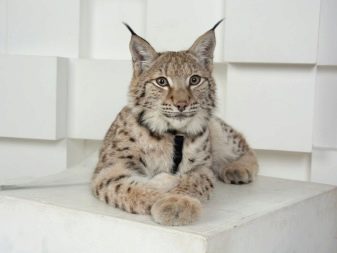
Description of breeds
There are quite interesting representatives of the feline world, which combine the features of a wild lynx and a pet. Pets of these breeds easily find contact with children and large animals. At the sight of birds and small pets, they can begin to hunt, this is how the genes of wild ancestors are manifested. Moreover, in case of danger, they can protect themselves and their owners.
Some breeds were discovered by chance in nature. In this case, breeders only fixed the characteristic features. Others have turned out thanks to the painstaking work of specialists.
If the kitten was bred correctly, then it receives only the best features from both parents.
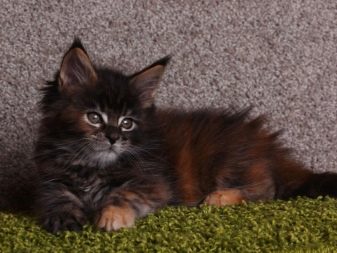

Pixie bob
The short tail and beautiful tassels on the ears indicate the relationship of such a cat with a lynx. American specialists began to breed pixie beans back in 1985. The crossing involved a tailless cat with a large number of toes and a large short-tailed cat. Consider the features of the appearance of such animals.
- The body is massive, muscular. Females weigh 4.5-5 kg, males 5-9 kg. The belly hangs down slightly, and the ribcage is rather wide.
- If you look closely, you will notice that the hind legs are longer than the front ones. Normally, a pixie bob can have up to 7 toes. Developed musculature of the limbs.
- The tail may reach the hock joint and the minimum length is 5 cm. There may be kinks or kinks.
- The head is pear-shaped, with a well-developed chin. The eyes resemble triangles with rounded corners. Tassels on the ears are desirable. Representatives of the breed are always with sideburns.
- The coat is no longer than 5 cm, only on the belly there can be more.
- Among the colors, there are all shades of tabby, ticking, light belly and neck, paw pads are gray or brown.


Pixie beans are affectionate and have a strong bond with their owners. They are well trained and love to walk on a leash. Representatives of the breed enjoy communicating and playing with people. Hearing the habitual meowing from such a pet is rare., animals communicate differently, and sometimes even growl predatory. They perfectly find a common language with children and other animals.
During games, they do not go into a hyperactive state. This only happens with kittens. Cats of this breed are conservative poorly perceive the change of scenery and abrupt changes in the appearance of the owners.
Even as a child, it is worth teaching them to use various puzzles and interactive toys.
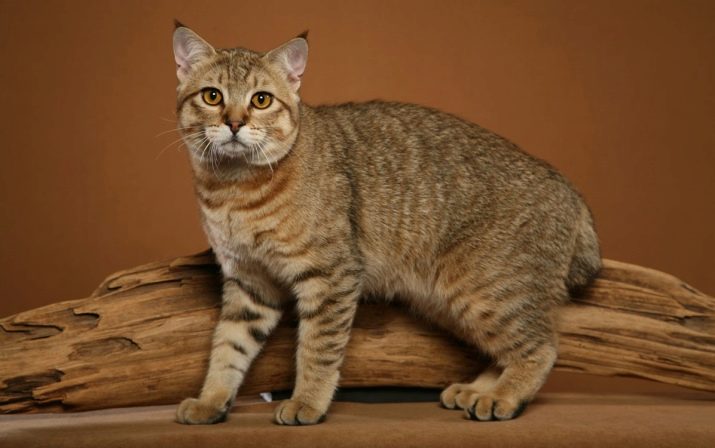
Maine Coon
This breed is one of the most popular in the world. It originated in the wild in Maine, where the locals domesticated flattering cats. In 1950, the species was on the verge of extinction. However, after 3 years, a club was created in which fans of the breed began to save the day.
Today Maine Coons are recognized by all organizations of felinologists. The appearance of the cat is determined by the standard.
- The long body is muscular, slightly rectangular. The tail is long. The chest is well developed, the paws are strong.
- The head with pronounced cheekbones and mustache pads resembles a square in shape. Ears can be with or without tassels, but they are always set high.
- The coat is of medium length. There is a noticeable increase in the fur on the neck and hind legs. Long hairs are also present on the tail.
- The color is varied. Chocolate, beige, color-point, cinnamon and lilac wool options are not allowed.
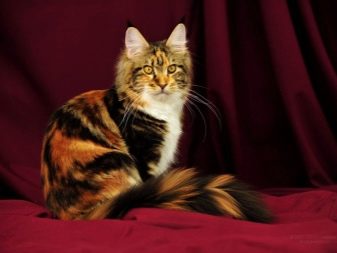

The body, together with the tail, can reach 120 cm in length, while females weigh about 5-6 kg, and males - 9-12 kg. Affectionate and open-minded cats, however, maintain their distance when in contact with people. They like to observe the actions of the owners and participate in their activities, but avoid aimless sitting on their hands.
The peculiarity of the breed is its sensitivity. If the owner is tired, then the cat does not bother with active games. Animals love to give a voice, but do not meow, but as if chirping with a large variation in intonation. Maine Coons are good with water. As they grow older, activity gives way to laziness. They are wary of guests in the house, but they get along with children from the first meeting. Predatory cats get along well with other cats and dogs, but when in contact with small animals, they can awaken the instincts of a hunter.
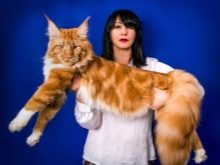
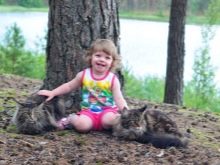

Siberian cat
The breed was formed in nature. It is believed that the ancestors of Siberian cats - inhabitants of the forests and steppes of Siberia, were domesticated by local residents. It is believed that representatives of the Bukhara breed took part in the breeding process, which were brought to those regions by settlers and merchants. The selection was carried out by Soviet specialists solely to consolidate the breed characteristics and obtain new coat colors. There are certain standards of appearance.
- Females weigh 4-8 kg and males 6-12 kg.
- The animal has a powerful and muscular body. The hind feet are slightly longer than the front feet, giving the impression that the shoulders are lower than the croup. Rounded feet have hair between the toes.
- On the wedge-shaped head, the ears are located with a slight slope to the muzzle. There may be tassels, but they are optional for the breed. Flat forehead, eyes medium or large, oval, but resembling a circle, set wide apart. The cheekbones are slightly oblong, rounded.
- Long-haired cats have a double undercoat, so they practically do not freeze. The collar is necessarily fluffy and stands out.
- The color can be any, the main thing is to express himself well.
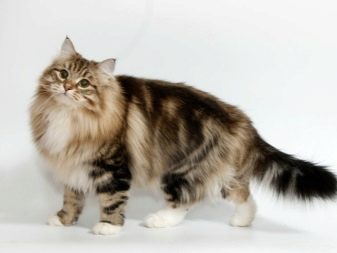
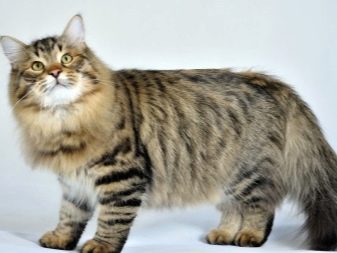
An intelligent and easily trained cat chooses one owner from the family and builds an equal relationship with him.
Representatives of the breed are independent and freedom-loving, they can spend a lot of time with a person if he is sick or upset, but they feel good alone. Good hunters can not only walk in the village unattended, but also bring prey in the form of rabbits.
The Siberian cat always behaves judiciously and wary in an unfamiliar place. He loves to conquer peaks, so he often climbs trees. They are brave, they guard their territory, they are not afraid of dogs.

Karaket
The breed was obtained by crossing a wild caracal and a domestic cat. The meeting of these two was accidental, took place in one of the Moscow zoos. The kitten looked like a wild male, but differed in the habits of a domesticated cat. It is this breed that is called the domestic lynx. The appearance of such a cat definitely deserves attention.
- The musculature is well developed and the body is proportional. The length can reach 90-100 cm, and the height at the withers is 50 cm. On average, animals weigh 9-12 kg, sometimes reaching 15 kg.
- The legs are long and well muscled. The tail is medium in length. There is a small fold of fat on the belly.
- The head is wedge-shaped, with a convex forehead. The eyes are almond-shaped and can be yellow or green in color. The wild cat has dark markings around the inner corners.
- The large ears are set high and have black tassels. Cats can actively wiggle them.
- The colors include chocolate, wild, silver and cinnamon. Ticking is always present. Closer to the bottom of the body, the coat is lighter, with spots.
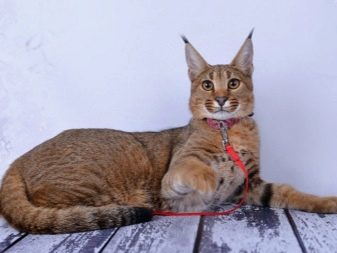
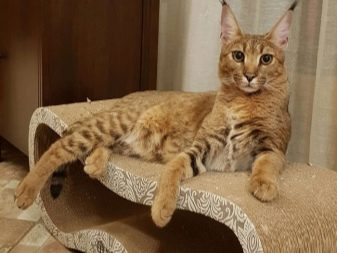
If the mating is carried out according to all the rules, then the animals as a result are very kind, flexible and obedient. Cats and cats do not like to sit on their arms for a long time while they are stroked and squeezed. At the same time, they are happy to take part in the active activities of people. Amenable to training, can learn complex tricks. Even without training, they bring toys to the owners. In the process of games, they do not tear, do not break things.
Representatives of the exotic breed are active at night. If the karakets do not play, they begin to walk very quietly. Large animals are treated well, and small ones are hunted.
Before bringing the kitten into the house, create a quiet and calm environment for the best adaptation.
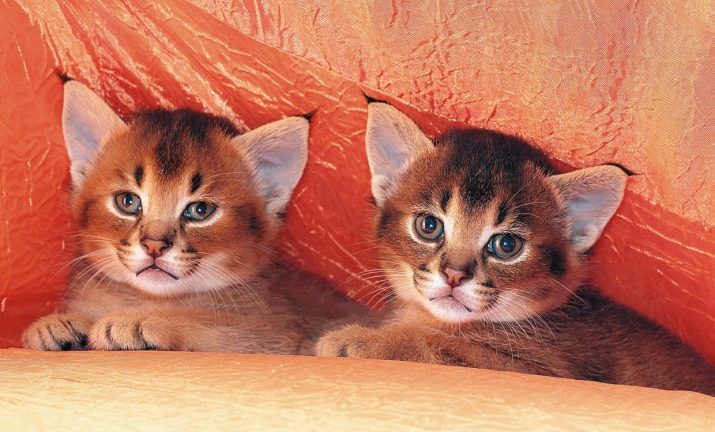
Norwegian Forest Cat
The only representative of the feline world who descends from a tree head down. The exact origin is unknown, but the Angora cats are believed to be the ancestors of the Norwegians. In the post-war period, the Norwegian forestry was on the verge of extinction. Let's dwell on the appearance of the animal.
- On average, cats weigh 5 kg and cats weigh 6-8 kg.
- The muscles are well developed, the bones are strong.
- The paws are strong with large pads. The hind ones are slightly longer than the front ones.
- The tail is long. The exact size is ideally equal to the size of the torso to the neck.
- The head is shaped like an equilateral triangle, the nose is straight. The whisker pads are not highlighted. Medium ears with rounded tips, tassels desirable. The eyes are large, almond-shaped.
- The coat is semi-long, and the undercoat is thick. Areas of the neck, chest and hind legs are especially noticeable.
- Color can be any, except for those that occur as a result of hybridization (fawn, chocolate, sable and the like).

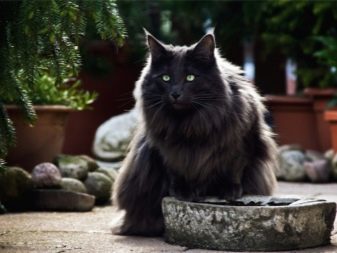
Norwegian Forest cats are distinguished by restraint combined with friendliness. They love to observe people and other animals from a secluded corner. Do not force them to sit on your hands, this activity does not attract pets. Usually, all family members are treated equally. They like to climb high, handle things carefully, do not spoil anything on purpose. Curious, playful and very brave cats.
Norwegian woodlands are good for children. The pet is more likely to run away from the baby than harm him. Guests are treated with caution, but not aggressive. At the sight of small animals, they recall their hunting instincts. They accept other cats and dogs well, but tend to build dominant relationships.

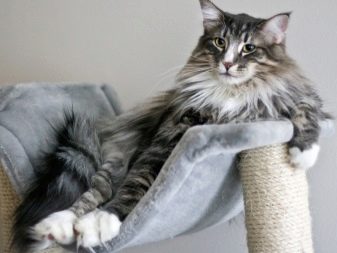
American bobtail
This young breed is also called the Yankee Bob. The breed began with a Siamese cat and a short-tailed cat (natural mutation). The standard looks like this.
- The body is dense, the weight reaches 4-8 kg. Legs well muscled. Movable tail 2.5-7.5 cm in length.
- The head is wedge-shaped, with a developed chin and prominent cheekbones. The short muzzle resembles a square. The ears are large, with rounded tips, mostly with tassels.
- The shape of the eyes is rounded, streamlined.
- The coat is semi-long or short. Looks a little shaggy.
- All colors are acceptable, but tabby is considered the best option.
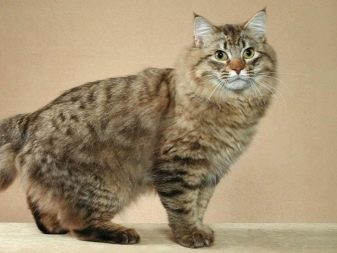
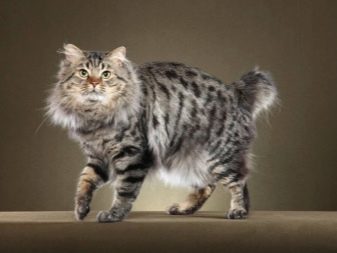
Representatives of the breed are sociable, do not tolerate time while the owner is at work.
They are attached to the whole family, but they choose one for the role of the owner. They sit on their hands with pleasure and recognize a person's mood well. These neat and active cats are distinguished by their outstanding intelligence. They like to walk and learn commands, tricks.
American bobtails tolerate trips in the company of the owner well. They can be taken on business trips. Get along well with other animals if they are kind. When showing aggression, they always fight back.
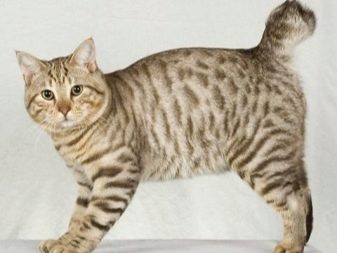

Kurilian Bobtail
They became interested in this breed in the XX century. At the same time, it was suggested that Japanese bobtails accidentally ended up on the Kuril Islands, which adapted to the local climate or interbred with Siberian cats. The following appearance is assumed.
- Cats weigh about 4-5 kg, but cats can reach 7 kg.
- The body is compact, the muscles are developed. The croup is slightly raised. The back has an arc silhouette.
- The paws are well developed, the feet are round. The tail is about 5-7.5 cm long with bends and kinks.
- The head with large and wide-set ears resembles a triangle in shape.
- The eyes are round and as if at an angle. Eye color should match the color of the coat.
- The coat is short or semi-long. In the second version, the areas of the neck and hind legs are especially prominent and there are brushes on the ears.
- Color can be anything except chocolate, lilac, Siamese, fawn and cinnamon.
- Of the shortcomings, it is important to note the strong curvature of the back, one caudal vertebra.
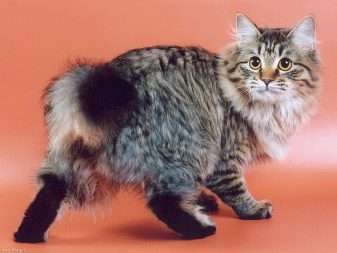

Smart cats are moderately active. They need the attention of a person, they yearn alone, but they do not like to sit on their hands. Cats easy to train and often carry items even without training. They are good at understanding human speech. Pets are very sociable, but do not meow, but emit gurgling, blathering sounds, sometimes howling.
Representatives of the breed do not beg or steal food, they easily accept the rules of conduct in a new home. They get used to the toilet quickly. When free-roaming, they can bring prey in the form of squirrels, hares and snakes.
If the cat and the cat live together, then the kittens are taken care of together.
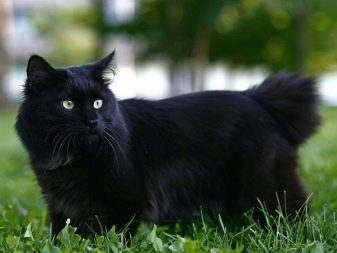

Content
If you want a domesticated lynx, then you should take a kitten only from a good cattery. The animal must be no older than 6 months. A lot of time should be spent with the kitten so that he gets used to the human presence. Choose animals with documents to be able to predict behavior.Lynx-like crossbreeds can be extremely aggressive and unpredictable.
Do not forget that this pet has wild ancestors... Carakets, for example, cannot be fed with dry food, they eat meat. It is better to consult the breeder and veterinarian about nutrition for a particular breed. Even if the offspring of the lynx are allowed to be fed dry crackers, the diet should be balanced and always include meat. This is necessary not only for general health, but also for the development of the jaw.
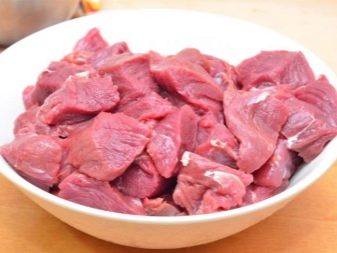
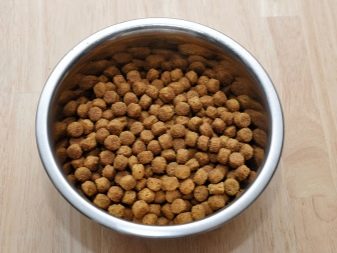
You cannot bring such an animal to a small apartment. The breed needs a lot of space for active play. Be sure to brush your pet so that he does not eat his own fur. You need to bathe your home lynx with the usual regularity, as it gets dirty.
Domesticated lynxes love to spend time outdoors. Even as a child, teach the animal to a harness and a leash so that no trouble happens on a walk. You also need to start teaching cats simple commands as early as possible. This way you can at least partially control the behavior of your pet.
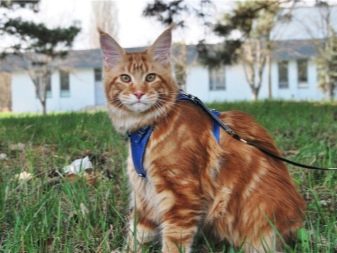
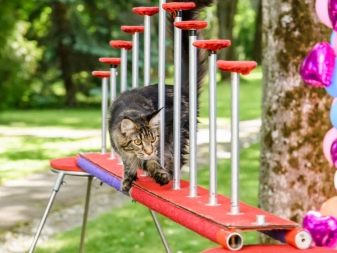
Breeding secrets
Cat breeds that resemble wild lynx are very popular. They are affectionate predators capable of both attacking and being tame. Breeding animals of these breeds is quite interesting and profitable. The main thing is to arrange everything correctly, take into account all the nuances.
- Only animals of the breed class are allowed for breeding. A cat or a cat must have good results at competitions and shows. Make sure you have a complete package of documents, including a veterinary passport.
- The animal must be biologically ready for reproduction, reaching a certain age. Much depends on the specific breed, it is better to consult with veterinarians.
- To choose a partner, contact a feline club. As a last resort, look for a suitable applicant at the same exhibitions.
- Kittens need to be kept in a proper environment. As they grow up, they must receive the nutrition and care they need. If a kitten of a breed similar to a lynx does not communicate with people from childhood, then later it may not get used to them.
- Always complete all paperwork. Kittens are expensive only under this condition. Do not forget about the mating contract.
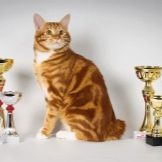

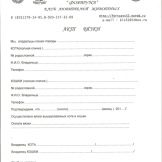
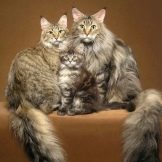
If you have made the decision to breed kittens of some exotic breed seriously, then it is worth equipping the nursery.
This is possible only if you own your own private home. It is better to build a separate house for the cats in the yard, where everything you need will be. It should be warm, dry and clean, no drafts.
For a comfortable life of individuals for mating and the development of their kittens, it is necessary to equip not only a recreation area, but also places for active games. It is recommended to fence off the outdoor area so that the animals can walk. Of course, the maintenance will take a lot of money and patience, but the result is worth it.
For interesting facts about Maine Coon cats, see the following video.
































